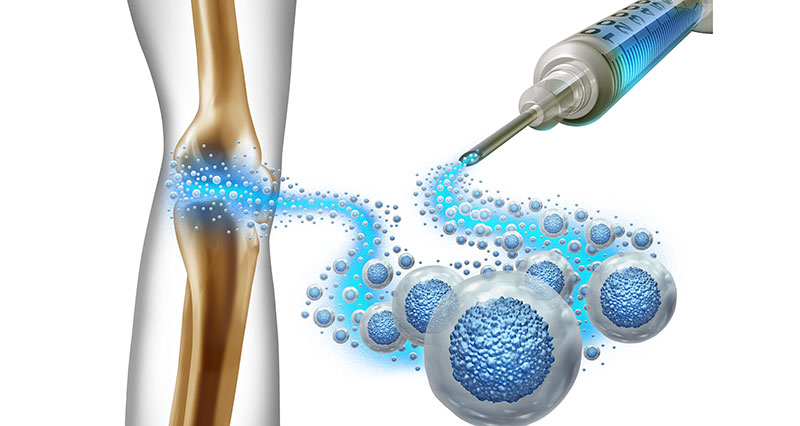How does Stem cell therapy work for sports injuries? Stem cells used in therapy are typically harvested from the patient’s own body, often from bone marrow or adipose (fat) tissue. Once harvested, the cells are processed and then injected into the injured area. These cells are able to differentiate into the specific types of tissue needed to repair damaged ligaments, tendons, cartilage, or muscles. Therefore, promoting regeneration, reducing inflammation, and speeding up the natural healing process.
Key Uses in Sports Medicine
Stem cell therapy for treating sports and musculoskeletal injuries began to gain attention in the early 2000s. It was initially explored for its potential to help regenerate damaged tissues, particularly in orthopedic and musculoskeletal injuries. Early uses focused on applying stem cells to repair the following:
Cartilage Regeneration
One of the most promising uses of stem cell therapy is in the treatment of cartilage damage, particularly in the knees. Cartilage injuries are common in sports. Cartilage does not heal well at all because the blood supply is so poor. Doctors use stem cells to regenerate this tissue, offering a potential alternative to joint replacement surgeries in the future.
Tendon and Ligament Injuries
For athletes suffering from conditions like Achilles tendon ruptures or rotator cuff tears, stem cell therapy can aid in healing these structures without the need for invasive surgery. It promotes faster recovery and reduces the likelihood of reinjury by strengthening the damaged tendons and ligaments.
Arthritis and Joint Pain
Stem cell therapy is also used for managing osteoarthritis in joints such as the knees, hips, and shoulders. The regenerative capabilities of stem cells can help reduce inflammation and promote the regeneration of joint tissues, which can be particularly beneficial for athletes dealing with chronic joint pain.
Spinal Injuries
Although still an area of ongoing research, stem cell therapy shows promise in treating more complex injuries, such as those involving the spine. Early studies suggest that stem cells could help regenerate damaged spinal discs and potentially improve mobility and reduce pain in athletes with spinal injuries.
Benefits for Athletes
So in summary, what are the potential benefits for athletes?
Faster Recovery
Stem cell therapy helps reduce recovery time by promoting faster tissue repair, allowing athletes to return to their sport more quickly.
Minimally Invasive
Since stem cell therapy often uses the patient’s own cells, it involves fewer risks than traditional surgeries and has lower chances of rejection or infection.
Potential to Avoid Surgery
For some athletes, stem cell therapy provides an alternative to surgery, especially for conditions like partial ligament tears or early-stage cartilage damage.
Famous Athletes Using Stem Cell Therapy
Several high-profile athletes have turned to stem cell therapy to extend their careers or recover from injuries. Peyton Manning reportedly used stem cell therapy to treat a neck injury, while Rafael Nadal has used it to recover from knee injuries. These cases highlight how stem cell therapy is being integrated into elite sports recovery protocols.
Stem cell therapy remains a rapidly developing field, and while it has shown significant potential in sports medicine, ongoing research is needed to fully understand its long-term efficacy and optimize its application in various sports injuries.




